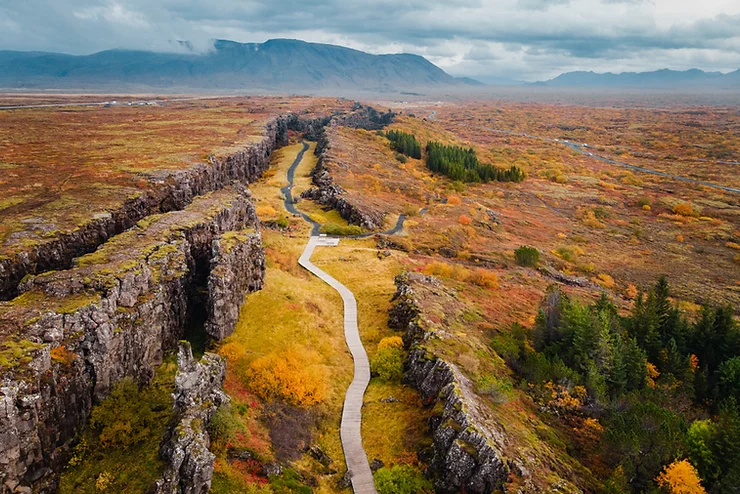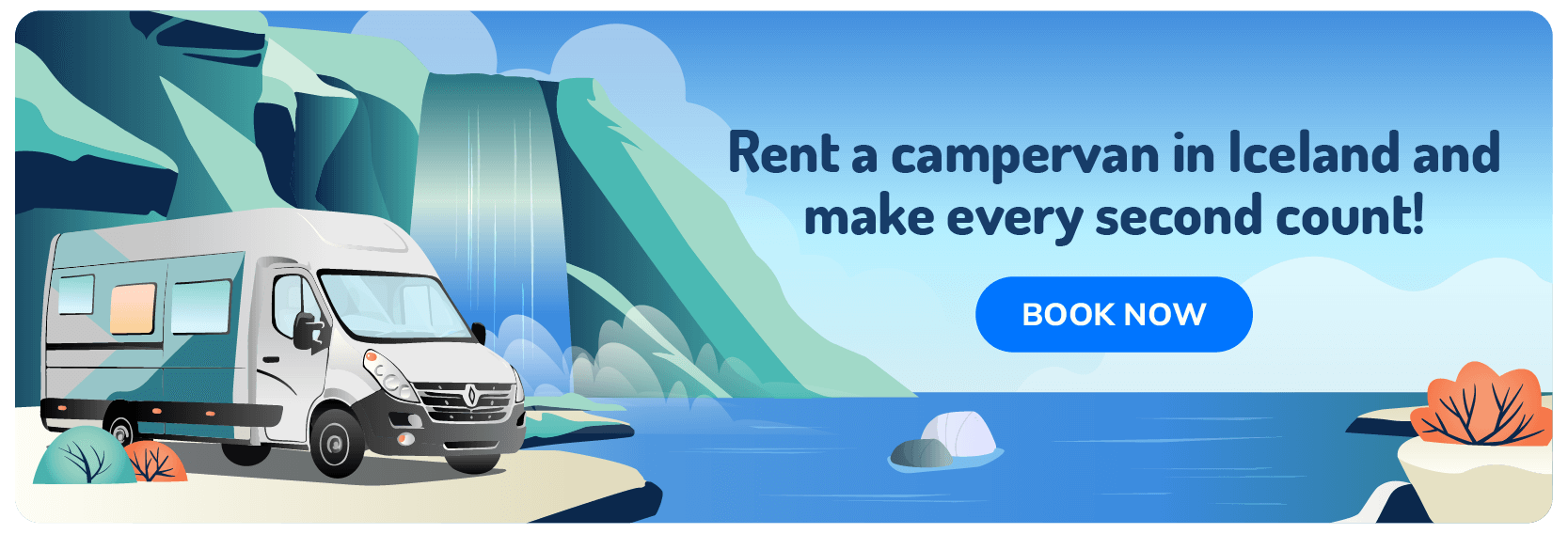Fall in Iceland already feels like you’ve stepped into a postcard. But swap hotel bookings and tour buses for a campervan, and you’ve unlocked the ultimate way to see it all.
Think fewer tourists, golden landscapes, cozy nights with the heater humming, and waking up to waterfalls outside your window. Sounds good? Then this guide’s for you. We’ll cover everything from what to see to what to pack through the lens of van life. No fluff. No generic tips. Just the stuff that’ll actually help you pull off a smooth and unforgettable fall road trip with your motorhome rental in Iceland.
Why Fall Is the Best Season for Campervan Travel in Iceland
If you want the freedom to roam without summer’s chaos or winter’s snowdrifts, fall is your sweet spot. Here's why:
- Lower rental rates - Campervan prices drop after August. September and October are shoulder season gold, often up to 20 to 40% cheaper than peak summer.
- More parking, fewer people - Campgrounds are quieter, attractions are less crowded, and you won’t need to fight for a parking spot at Seljalandsfoss.
- Cozy conditions with the right gear - You won’t freeze in a campervan. Most rentals come with heating, and with temps between 0°C and 10°C (32°F to 50°F), it’s chilly but manageable.
- Sunsets and auroras from the front seat - The Northern Lights season kicks off mid-September. You’re already far from light pollution, so just pull over, pop open the back, and enjoy the show.
- You can still access epic spots - Most roads, including the entire Ring Road and popular routes like the Golden Circle, stay open through October. The Highlands are a different story and mostly off-limits unless you’ve got a 4x4 and a bit of luck.
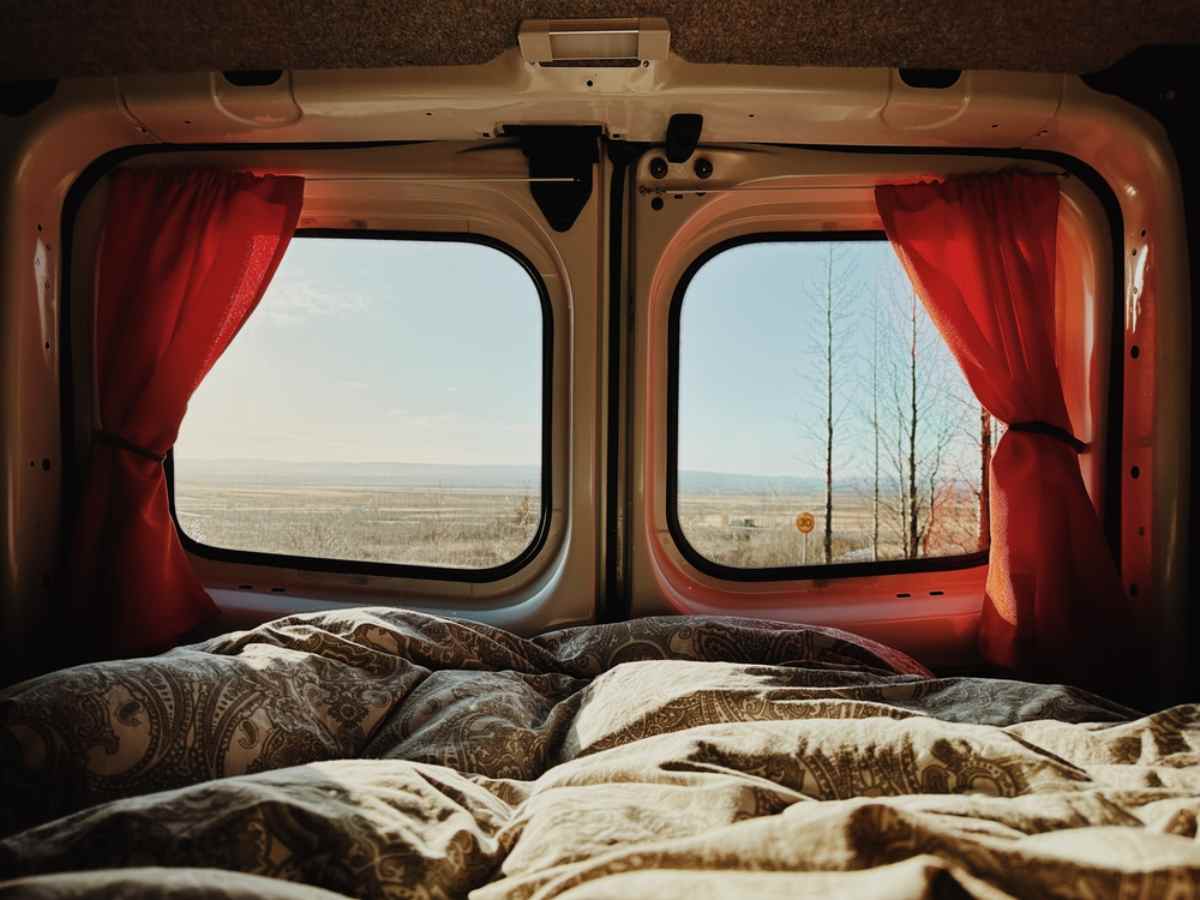
More Reasons to Visit Iceland in the Fall
Visiting Iceland in the fall is like stepping into a natural wonderland that blends perfectly summer's lingering charm with the first whispers of winter. It's the kind of experience that makes you feel like you've unlocked a secret season, and trust me, it's worth it. Here are reasons to visit Iceland in autumn:
Stunning Scenery
Fall in Iceland turns the landscapes into a masterpiece of red, orange, and gold, creating a stunning contrast with rugged volcanic terrains. Imagine exploring places like:
- Thingvellir National Park along the Golden Circle
- Thorsmork Valley, with its fiery autumn hues
- Hraunfossa Waterfall on the Silver Circle
This colorful transformation makes iconic spots like glaciers and waterfalls even more photogenic, turning your camera roll into pure gold.
Fewer Tourists and Better Deals
If you're planning to travel to Iceland in the fall, one of the biggest perks is the quieter atmosphere. Fall is part of Iceland's shoulder season, which means fewer tourists are going to popular spots. You'll have more time and space to soak in the beauty without feeling rushed or battling crowds for the perfect photo.
The fall season also comes with better deals, making it easier on your budget. Accommodations, car rentals, and tours are often more affordable compared to the busy summer months. This means you can experience more of Iceland's magic for less.
Plus, the quieter season creates opportunities to connect with locals and dive deeper into Icelandic culture.
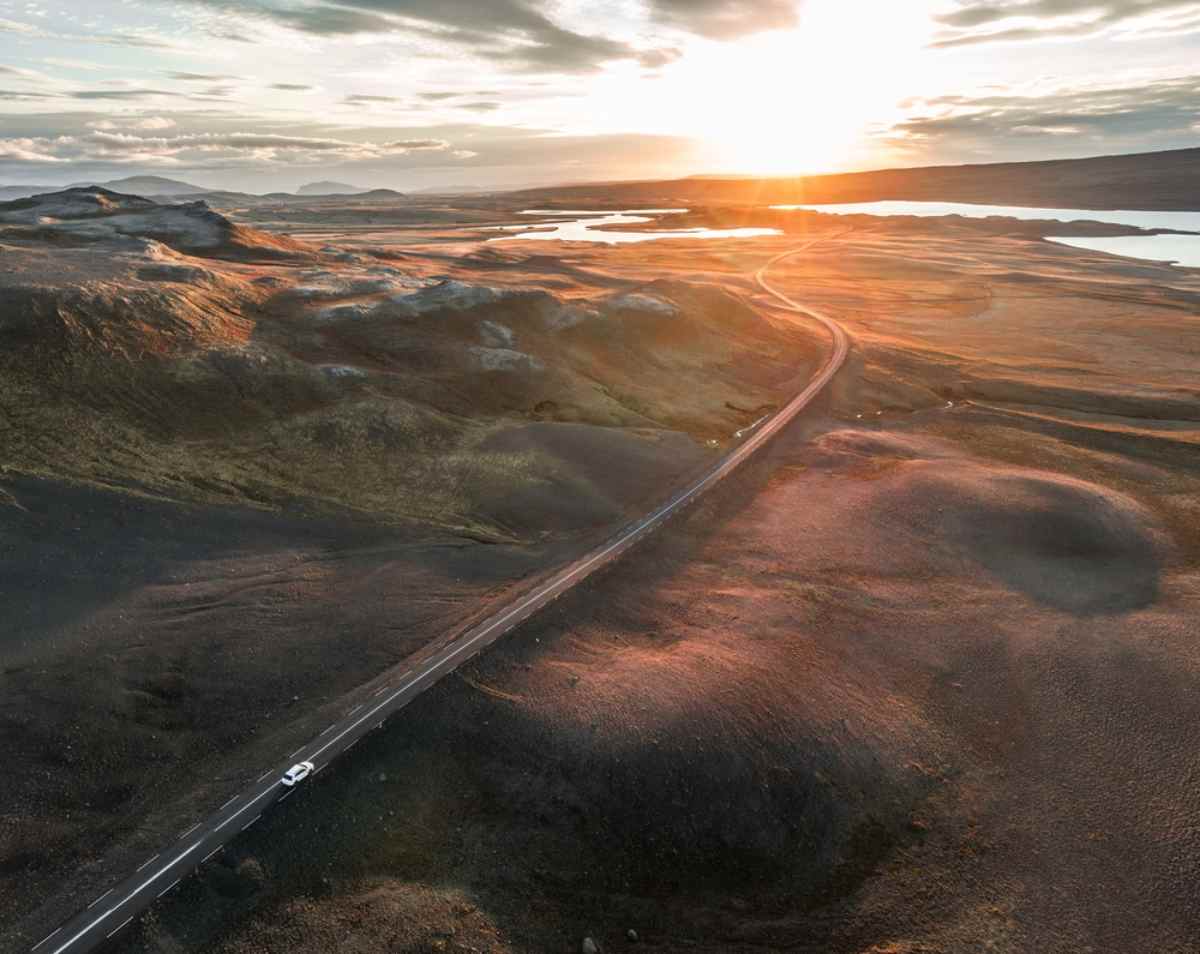
Ideal Weather for Exploration
September offers a sweet spot where the weather is crisp but not too cold. Trails are still accessible, and the golden twilight hours are a dream for photographers. It's the perfect balance for outdoor adventures without the extremes of summer or winter.
Weather and Temperatures in Iceland in the Fall
Let's talk about the weather in Iceland in the fall because knowing what to expect can make your trip so much smoother. Fall in Iceland runs from September to November, and it's a transitional season where summer's warmth slowly gives way to winter's chill.
The weather can be unpredictable, but that's part of Iceland's charm, right? Here's a breakdown of the temperatures in Iceland in the fall and what to expect:
September: Lingering Summer Warmth
September still holds onto a bit of summer, with mild temperatures and decent daylight hours.
- Average temperatures: 5°C to 10°C (41°F to 50°F)
- Daylight: Starts with 13 hours and drops to 9 hours by the end of the month
- Precipitation: About 67 mm (3 inches) over 12 rainy days
- Wind speeds: 15-21 km/h (9-13 mph)
It's a great time for hiking and exploring, as the weather is relatively comfortable, with a mix of clear skies and occasional rain.
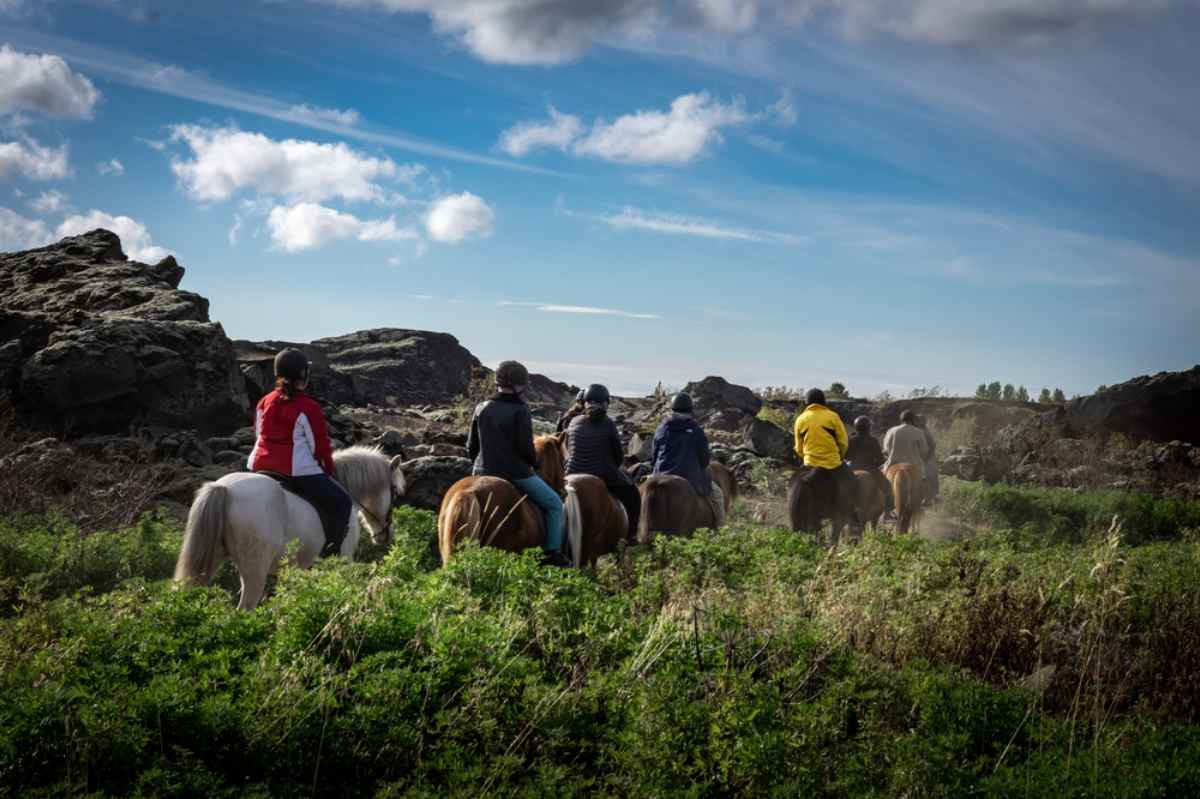
October: Cooling Temperatures
By October, you'll notice the crispness in the air and the occasional frost, especially in higher altitudes.
- Average temperatures: 2°C to 7°C (36°F to 45°F)
- Daylight: Shortens from 11 hours to 8 hours
- Precipitation: Around 77 mm (3 inches) over 22 days
- Wind speeds: About 20 km/h (13 mph)
The weather in Iceland in the fall takes on a more wintery feel during October, with frequent rain and stronger winds. It's also when you might see the first snowfall in some areas.
November: Cold and Hints of Snow
November marks the start of Iceland's winter, with temperatures dropping and snow becoming more common.
- Average temperatures: 0°C to 4°C (32°F to 39°F)
- Daylight: Just 5 to 8 hours per day
- Precipitation: About 86 mm (3 inches) over 15 to 20 days
- Wind speeds: 25-40 km/h (16-25 mph)
November's weather can be a bit wild, with storms, rain, and snow all making an appearance. It's the perfect time to bundle up and enjoy Iceland's raw beauty.
Average Fall Temperatures
|
Month |
Average Temperature (°C) |
Average Temperature (°F) |
|
September |
5°C to 10°C |
41°F to 50°F |
|
October |
2°C to 7°C |
36°F to 45°F |
|
November |
0°C to 4°C |
32°F to 39°F |
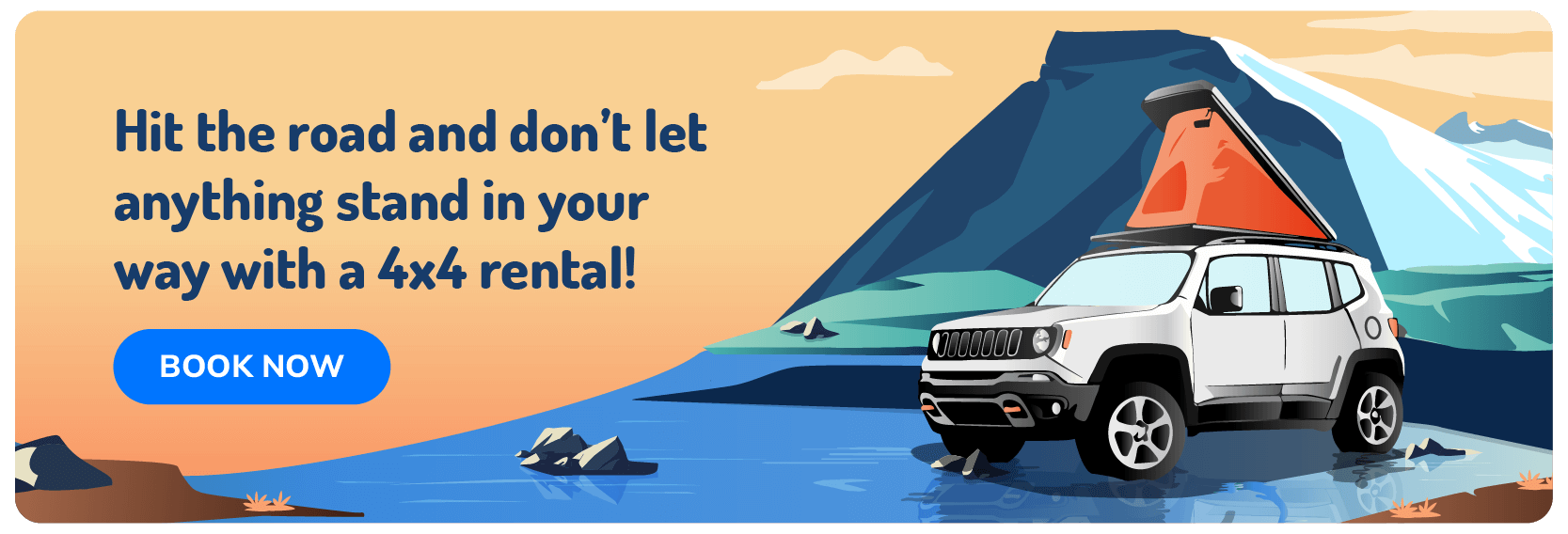
It's important to note that these are average temperatures, and actual conditions can vary depending on the specific location in Iceland. Coastal areas tend to be milder, while inland and highland regions experience colder temperatures.
Top Things to Do in Iceland in the Fall
Iceland's autumn offers a magical blend of natural wonders and cultural experiences. Here are the top things to do in Iceland in the fall:
Witness the Northern Lights
If you're planning to travel to Iceland in the fall, witnessing the Northern Lights should be at the top of your list. The longer nights from mid-September to early April provide the perfect backdrop for this incredible natural display. Clear, dark skies and cold, dry temperatures give you the best chance to see the Aurora Borealis in all its glory.
While the lights occasionally appear in Reykjavik, the best views are found outside the city, far from any light pollution. Popular spots include the Westfjords, the black sand beaches of Vík, and the serene Kirkjufell mountain on the Snæfellsnes Peninsula. For an even more unique experience, head to Jökulsárlón Glacier Lagoon, where the lights reflect beautifully off the icy waters.
Many locals and travelers join Northern Lights Super Jeep tours to maximize their chances. Expert guides use aurora forecasts and take you to these remote locations, ensuring a magical viewing experience.
Explore the Golden Circle
Iceland in autumn is like stepping into a living postcard, with the landscapes bursting into fiery shades of red, orange, and gold. The fall season adds a magical touch to the already dramatic scenery, making it the perfect time to explore.
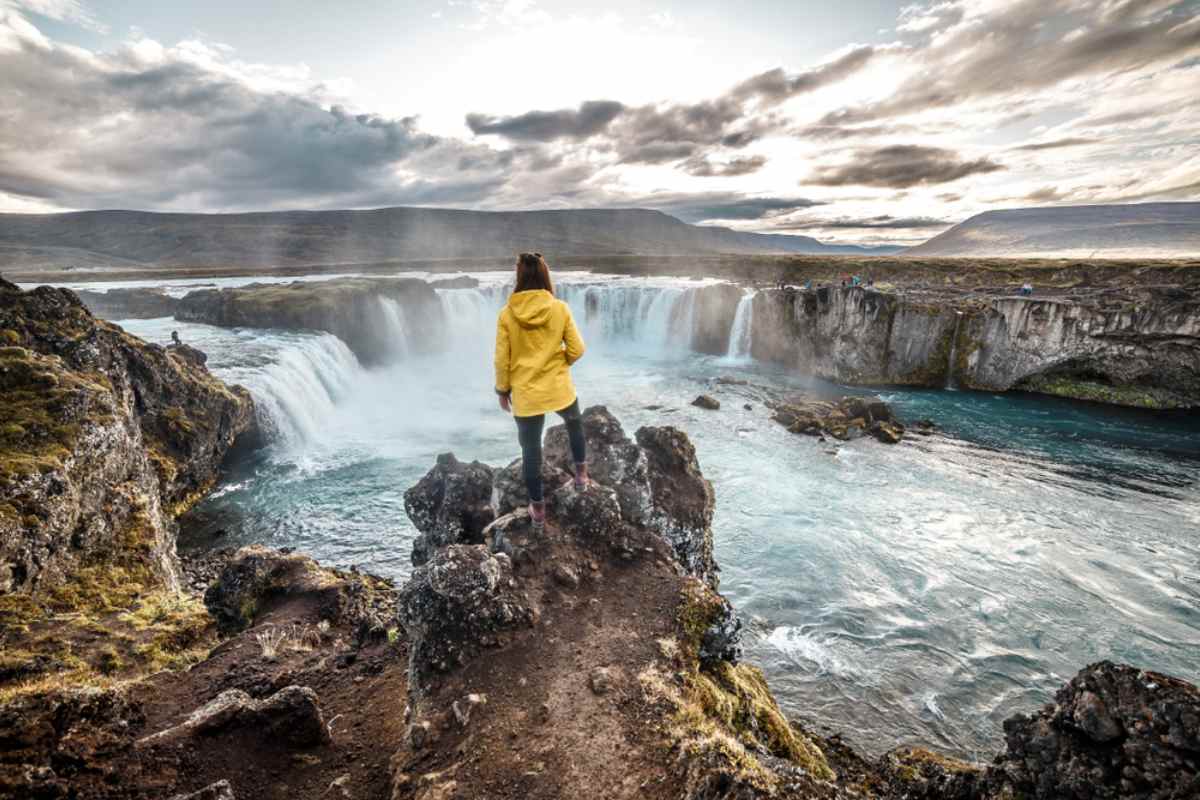
The Golden Circle is a must-visit, featuring iconic spots like Þingvellir National Park, where golden foliage contrasts beautifully with rugged cliffs, and Gullfoss waterfall, which is even more stunning surrounded by autumn hues.
Further down on the south coast, Jökulsárlón Glacier Lagoon offers a surreal blend of floating icebergs and vibrant fall colors. It's a sight you won't forget, especially as the soft autumn light enhances the landscape. Don't miss Skógafoss and Seljalandsfoss, two of Iceland's most famous waterfalls, framed by the rich tones of autumn leaves.
Geothermal Experiences
If you're looking for the perfect time to visit Iceland's incredible geothermal pools, autumn is a great choice. There's something extra special about soaking in warm, soothing water while crisp fall air surrounds you.
The Blue Lagoon is a must-see, offering its famous milky blue waters and luxurious spa experience. It's the kind of place where you can completely relax while enjoying breathtaking views of the surrounding lava fields. For something more natural and less crowded, head to the Secret Lagoon in Flúðir.
This charming hot spring feels authentic and peaceful, perfect for unwinding. If you're up for an adventure, Reykjadalur Valley is the spot for you. After a scenic hike through colorful autumn landscapes, you'll find a hot river that's ideal for a relaxing dip. Don't forget to explore geothermal areas like Hveradalir in the Highlands, where steaming vents and bubbling mud pools add an extra layer of Icelandic magic.
Seasonal Wildlife Watching
Autumn is an amazing time for wildlife lovers to explore around Iceland, offering unforgettable opportunities to see animals in their natural habitats. For a truly special experience, take the Húsavík Original Whale Watching tour in early autumn.
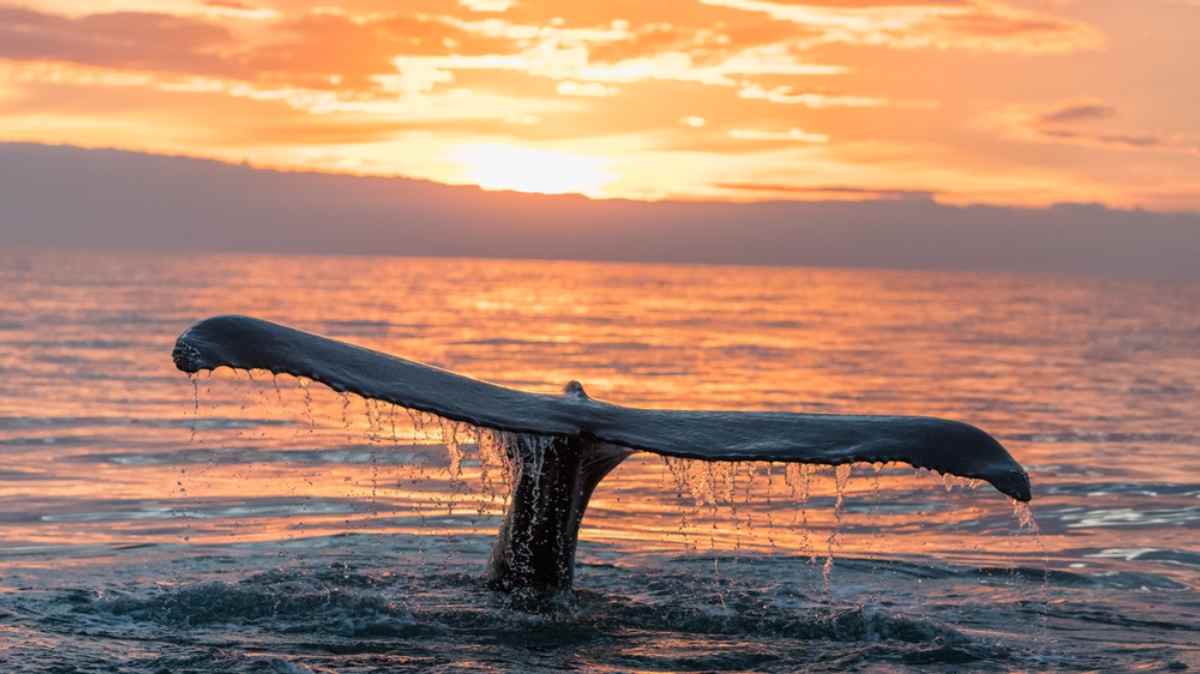
Known as Iceland's whale-watching capital, Húsavík provides an incredible chance to spot majestic humpbacks and even the occasional blue whale as they migrate through these northern waters. The tour's expert guides make the experience both educational and thrilling.
At Jökulsárlón Glacier Lagoon, seals can often be seen lounging on floating icebergs or swimming nearby, their playful nature adding to the charm of the lagoon. Bird migration also peaks during autumn, making it a perfect time to observe various species on their southward journey.
Cultural Events and Festivals
If you're planning to explore Iceland this autumn, make time to experience the country's unique cultural events and festivals. Autumn is a season when Icelandic traditions and creativity truly shine. The Reykjavik International Film Festival, held in late September or early October, is a fantastic way to dive into Iceland's vibrant film scene.
It showcases thought-provoking international and local films, offering something for every cinephile. In early November, the Iceland Airwaves music festival transforms Reykjavik into a hub of energy and creativity. With performances by both emerging and established artists, it's a celebration of music that blends global talent with Icelandic charm.
For a more traditional experience, don't miss Réttir, Iceland's annual sheep round-up in early September. It's a hands-on way to witness a centuries-old tradition as farmers and locals work together to gather sheep from the highlands.
Hiking Adventures
Autumn is a fantastic season for hiking in Iceland, offering stunning landscapes painted with vibrant fall colors and fewer crowds on the trails. Whether you're a seasoned hiker or just love a good walk in nature, there are plenty of unforgettable spots to explore.
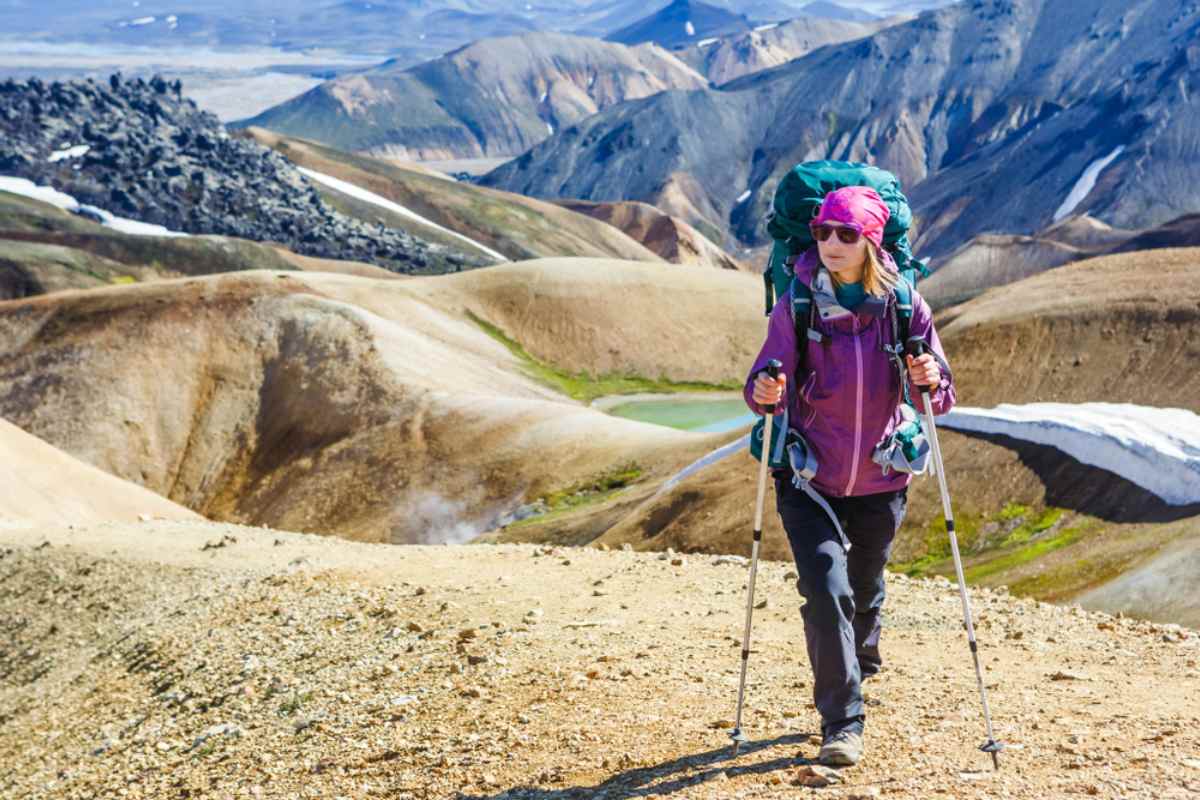
Start with Þórsmörk, a breathtaking nature reserve where autumn's golden hues bring the valleys and mountains to life. The trails here are perfect for soaking in the beauty of Iceland's rugged wilderness. For a shorter hike, try the Glymur waterfall trail, which takes about three to four hours. The journey to Iceland's second-highest waterfall is as rewarding as the destination itself, with stunning views along the way.
If you visit in September, don't miss Landmannalaugar, a hiker's paradise with colorful rhyolite mountains and geothermal hot springs. It's your last chance to visit before winter closes the roads.
What to Pack for Iceland in the Fall
Let’s skip the 'bring a jacket' stuff. Here’s what’ll actually make your campervan trip easier, warmer, and way more comfortable:
For Staying Warm
- Thermal base layers – Tops and leggings that are made for extreme cold weather.
- Insulated jacket – Lightweight, packable, and warm enough for 0°C nights.
- Rainproof outerwear – Iceland’s weather flips a coin hourly.
- Wool socks x 3 minimum – You’ll thank yourself later.
For Life on the Road
- Sleep system – Down-rated sleeping bags or extra blankets. Some vans provide them; some don’t.
- Flip-flops – Not just for hot springs. Also for 2 a.m. bathroom runs at the campsite.
- Reusable water bottle – Iceland’s tap water is cleaner than bottled.
- Headlamp or flashlight – You’ll need it by October when darkness hits by 5 p.m.
- Car USB charger – To keep your phone, camera, and life functioning.
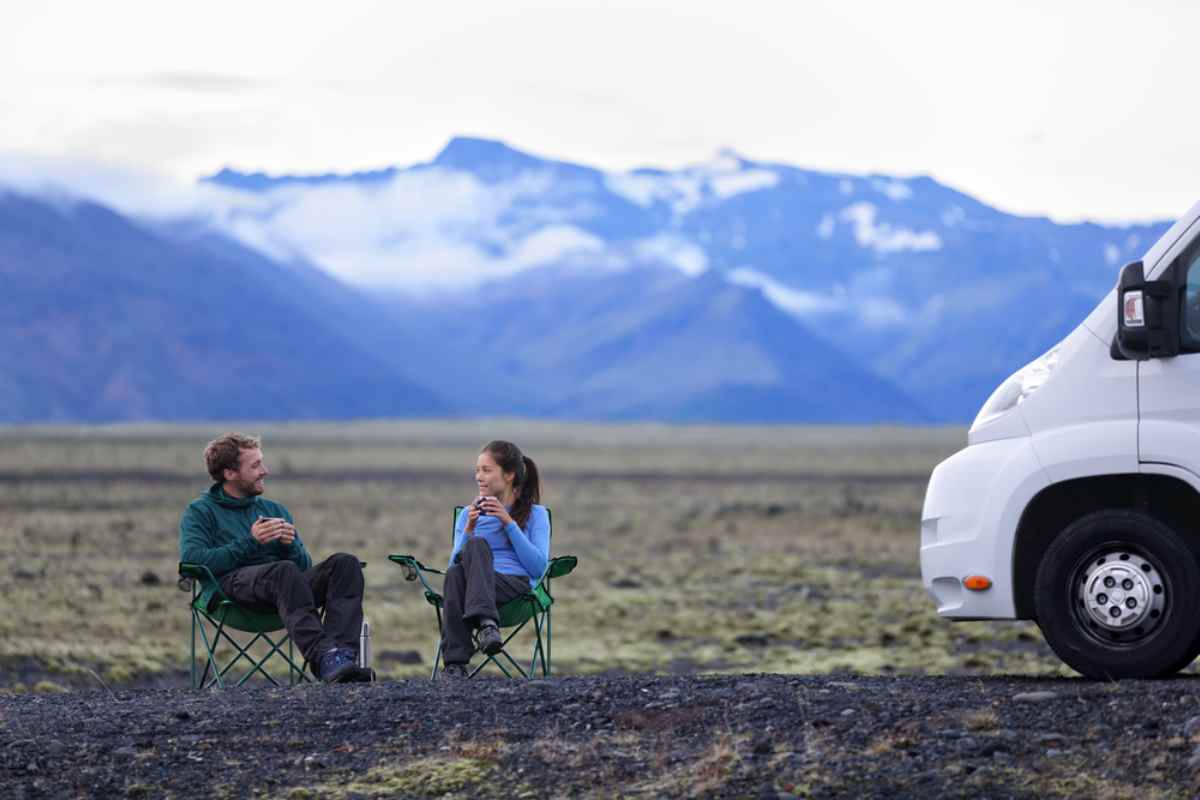
For Hot Spring Hopping
- Swimsuit – Yes, even in cold weather.
- Quick-dry towel – Or bring two, because everything takes forever to dry in fall.
- Dry bag – Keeps your stuff safe while you soak.
For Cooking and Eating
- Instant coffee or tea – For early morning views.
- Portable utensils and small cutting board – Makes van cooking 100x easier.
- Grocery bags – Iceland charges for plastic. Bring your own or pay.
Tip: Check what your van includes before you pack these things. Sometimes, your rental company will include sleeping bags, cooking equipment, and even a small stove.
Extra Tips for Traveling to Iceland in Autumn
Here are some extra tips to make your trip to autumn in Iceland unforgettable:
Navigating Shorter Daylight Hours
Navigating the shorter daylight hours in Iceland during fall doesn't have to be tricky if you plan ahead. The sunrise and sunset times change quite a bit throughout the season, so it's good to know what to expect. Here's how it plays out:
- September: The days start with about 14-15 hours of light, with sunrise around 6:11 AM and sunset at 8:41 PM. By the end of the month, it shifts to sunrise at 7:35 AM and sunset at 6:58 PM, giving you around 11.5 hours of daylight.
- October: Things change noticeably, with sunrise moving from 7:37 AM to 8:30 AM and sunset from 6:55 PM to 5:00 PM. Daylight hours drop from 11 to about 8.5.
- November: Daylight becomes scarce, starting with 8 hours early in the month and dropping to just over 5 by the end. Sunrise happens between 9:12 AM and 10:30 AM, and sunset shifts from 5:09 PM to 3:45 PM.
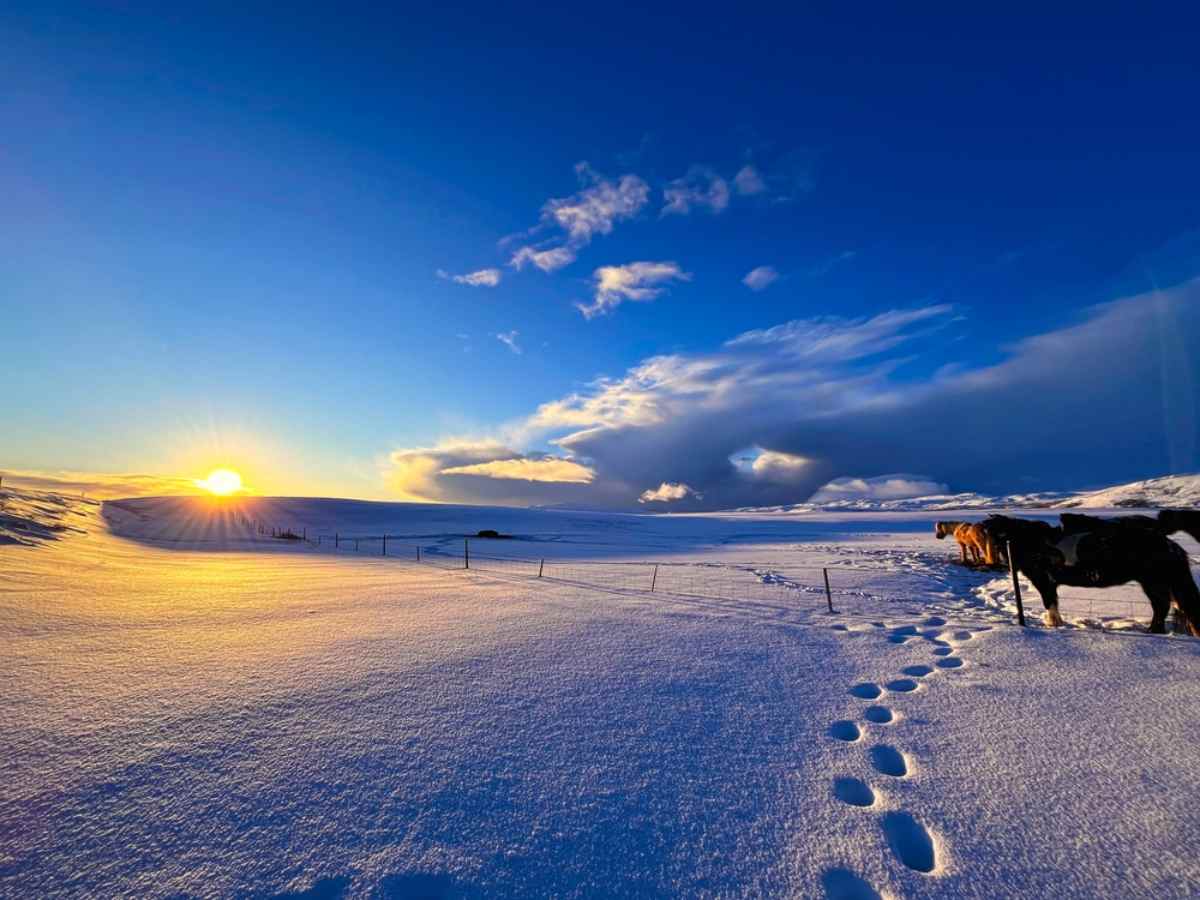
Driving Tips for Fall Weather
Consider renting a 4x4 vehicle for added safety and traction on potentially icy or wet roads. Always check Vedur.is for weather updates and Umferdin.is for road conditions before setting out. Roads can be slippery with rain, ice, or leaves, so adjust your speed and drive carefully. Planning your route is essential, especially as some highland F-roads close during autumn.
Eco-Friendly Travel Suggestions
Traveling through Iceland's pristine landscapes is an incredible experience, and it's important to do your part to keep it that way. Here are a few tips to make your adventure more eco-friendly:
- Stick to marked trails: Help preserve Iceland's delicate ecosystems by staying on marked trails. This also ensures your safety and prevents damage to the landscape.
- Minimize waste: Bring a small trash bag with you to collect any waste during your adventures, and properly dispose of it when you reach a designated waste receptacle.
- Support local businesses: Purchasing locally made products or supporting local tours and activities helps support Iceland's economy and reduces carbon emissions from imported goods. Plus, it allows for more authentic experiences.
- Drink Tap Water: Iceland's tap water is some of the cleanest in the world, so skip purchasing bottled water and bring a reusable bottle instead.
Renting a Campervan in Iceland
Renting a campervan in Iceland is a fantastic option for a cost-effective and flexible way to explore. It combines your accommodation and transport, saving money on hotels and giving you the freedom to explore remote areas. Many campervans come equipped with basic kitchen setups, so you can prepare meals and save on dining costs, which can be pricey in Iceland.
How to Choose a Campervan for Fall in Iceland
Not all campervans are created equal. The one you pick can make or break your trip—especially in fall when weather conditions shift fast. Here’s what to consider when choosing the right rig:
1. Go for Heating (Seriously)
Fall nights dip below freezing, especially in October and November. A built-in Webasto or diesel heater is non-negotiable unless you like the sound of chattering teeth at 3 a.m.
2. 2WD vs 4x4
- 2WD campervans are fine for the Ring Road, Golden Circle, and most south coast routes. They’re cheaper and more fuel-efficient.
- 4x4 campers unlock gravel roads, scenic backroads, and more flexibility. If you’re planning to explore Snæfellsnes, the Westfjords, or shoulder-season Highland edges, it’s worth the upgrade.
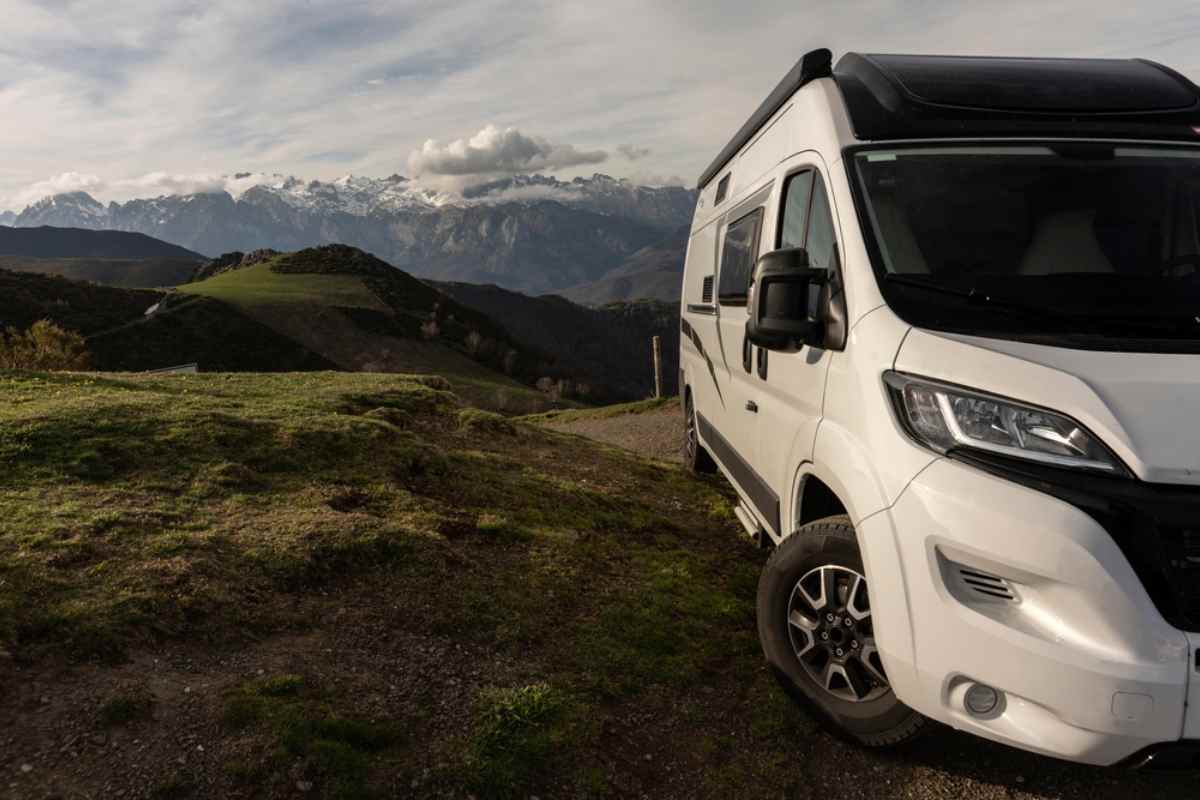
3. Manual vs Automatic
Iceland has plenty of hills, wind, and slick roads. If you’re not 100% comfortable driving with a stick, opt for an automatic. No shame in keeping things simple.
4. Campervan Size
- Solo or couples: Small 2-person vans like the Renault Trafic, VW Caddy, or Dacia Dokker are easy to park and drive.
- 3+ people: Go for a larger van with some standing room and indoor cooking space. Think in the range of Renault Master models.
- Want comfort? Some campers include a toilet, sink, or even a pop-up roof.
5. Winter-Ready Features
Even in the fall, you’ll want the following:
- Insulated interiors
- All-season or winter tires
- Heating system
- Extra blankets or sleeping bags
Recommended Campervans for Fall in Iceland
|
Model |
Sleeps |
Drive Type |
Transmission |
F-Road Access |
Daily Rate |
Best For |
|
Dacia Duster Roof Tent |
2 |
4WD |
Manual |
Yes |
$97 |
Budget-friendly F-Road access |
|
VW Caddy Camper (Auto) |
2 |
2WD |
Automatic |
No |
$106 |
Easy driving for couples |
|
Toyota Hilux 4x4 Camper |
4 |
4WD |
Automatic |
Yes |
$210 |
Families or rugged off-road trips |
|
Renault Trafic Camper |
3 |
2WD |
Manual |
No |
$143 |
Small groups needing indoor space |
|
Mercedes Campstar 4x4 |
4 |
4WD |
Automatic |
Yes |
$199 |
Comfortable 4x4 travel in fall |
Frequently Asked Questions About Fall in Iceland
What months are fall in Iceland?
Fall in Iceland spans September, October, and November, offering vibrant autumn colors, longer nights for Northern Lights, and fewer tourists compared to the peak summer season.
Are the roads icy in Iceland in October?
Roads in Iceland can be icy in October, especially in highland areas or during early mornings. Check Vedur.is and Umferdin.is regularly for road and weather updates.
Is October a good month to visit Iceland?
October is a great time to visit Iceland, with stunning fall landscapes, Northern Lights opportunities, fewer crowds, and seasonal activities like whale watching and autumn festivals.
Is it worth visiting Iceland in the fall?
Yes. Autumn in Iceland offers breathtaking scenery, unique cultural events, fewer tourists, and a chance to experience the dramatic seasonal transition between summer and winter.
What are the best activities in Iceland in the fall?
Top activities include Northern Lights hunting, soaking in geothermal pools, hiking in Þórsmörk, whale watching in Húsavík, and enjoying cultural events like the Reykjavik International Film Festival.
